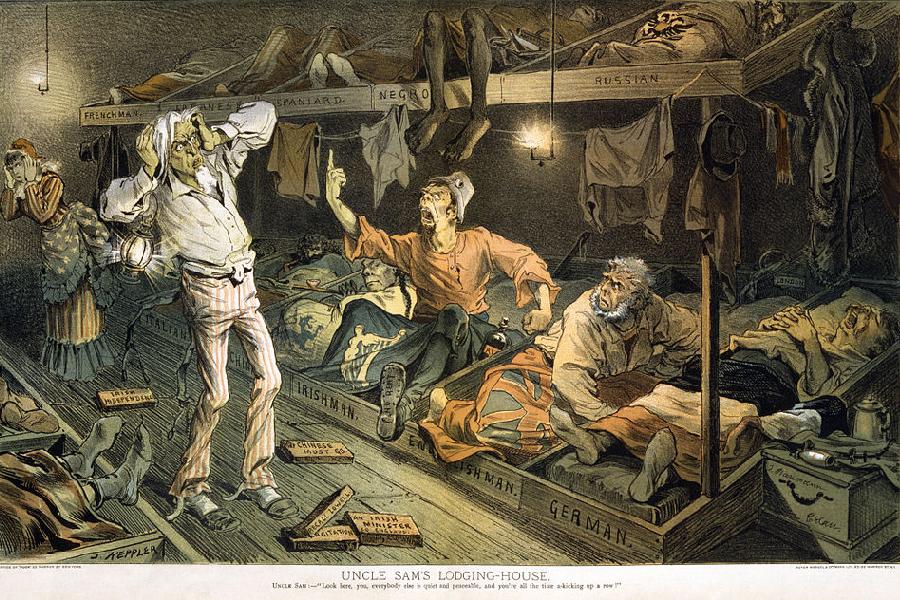The First Exclusion Acts

Wikimedia CommonsOpposition to Chinese immigration motivated demonstrations, and even riots, in the 1870s.
Up until the Civil War, federal immigration policy had been handled with a light touch and mostly dealt with reporting requirements. Even when the system was centralized, the State Department still kept its intervention minimal and largely concerned itself with enforcing residency requirements and maritime law.
That all began to change in 1875, when the kind of public moralizing typical of the late Victorian period motivated a blanket ban on immigration by known prostitutes and convicts. In 1903, the exclusion list widened to include polygamists and people with radical politics, mostly of the left-wing kind.
By 1917, with America’s first Red Scare in full effect and eugenic policies being adopted by a majority of states, the list grew yet again to include:
Even as America was turning away these tired, poor, huddled masses, Congress was enacting several new laws to exclude or expel people based on yet another characteristic: race.
The first Exclusion Act was passed in 1882 and squarely targeted Chinese immigrants. These people, whose labor had been deemed indispensable two decades earlier while the railroads needed building, were now to be blocked from entry.
Some legal immigration was still allowed, but with a head tax placed on each new arrival and a blanket ban on immigrants who had committed political offenses in their home countries, even if the crime they committed was not illegal in the US, such as blasphemy.
In 1888, the first laws in 90 years were passed that enabled the federal government to expel undesirable foreigners, whether naturalized or not. In 1917, restrictions were placed on Japanese immigration, as well as on unaccompanied minors, people with tuberculosis, and the physically disabled.
The National Quota System

Wikimedia Commons
By the time of World War I, American immigration policy was a hot mess. Dozens of laws overlapped and sometimes contradicted each other. Multiple government departments fought turf wars over enforcement and interpretation of the laws, and border security was in the hands of the Treasury Department.
The 1920s saw gradual reform through a series of national quota acts that, by the end of the decade, had become the new normal in immigration law.
While not replacing all of the racist and eugenics laws Congress had passed in previous decades, the national quota system at least streamlined them. In setting maximum targets for Eastern and Western Hemisphere immigration, with specific quotas for annual immigration from individual countries, the government could regulate intake in a way that had never been done before.
The 1929 Act, which made the 1924 quotas permanent, also finalized a unified immigration bureaucracy that would patrol the borders and enforce customs. Finally, the quota system allowed for rapid expansion in the face of international crisis, as Congress or the President could simply declare an emergency and temporarily expand the quota from one or the other troubled country until the pressure eased.





